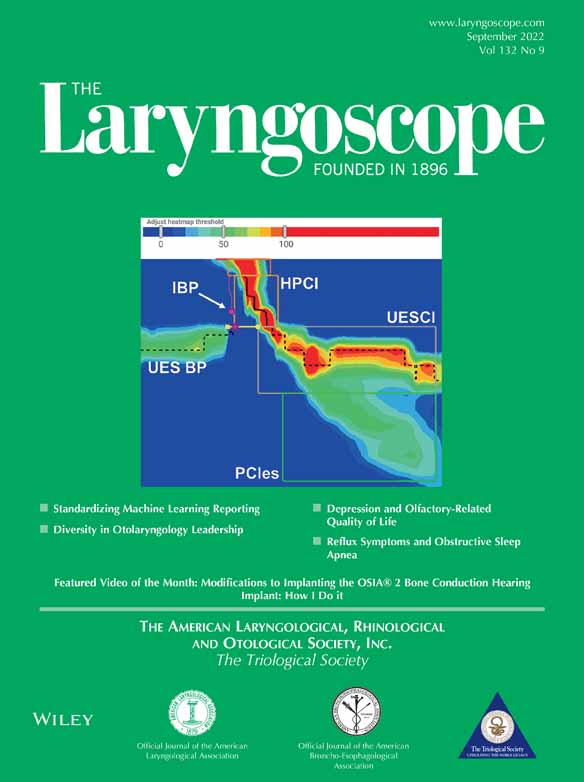Estimations of Laryngotracheal Stenosis After Mechanical Ventilation: A Cross-Sectional Analysis
Editor's Note: This Manuscript was accepted for publication on September 01, 2021.
This paper was presented as an oral presentation at the American Laryngological Association Annual Meeting, April 7–11, 2022, virtual meeting at COSM.
The authors have no funding, financial relationships, or conflicts of interest to disclose.
Abstract
Objectives/Hypothesis
To estimate the incidence of laryngotracheal stenosis among adults after intubation.
Study Design
Cross-sectional analysis.
Methods
We used the Nationwide Readmission Database to examine adult patients readmitted within 45 days after admission for mechanical ventilation. Those with a diagnosis of laryngotracheal stenosis or tracheostomy dependence on their index admission were excluded. Patient demographics, associated comorbidities, and intubation lengths were compared among those with and without a diagnosis of airway stenosis at readmission.
Results
An estimated 624,918 patients met inclusion with a mean age of 59 years (standard error = 0.2). There were 1,230 patients readmitted within 45 days and diagnosed with laryngeal (N = 362) or tracheal stenosis (N = 920) estimating an incidence of 1.98 per 1,000 discharges. Compared with those without a diagnosis of airway stenosis, those with stenosis were younger (57 vs. 59 years, P < .001), more often female (62% vs. 45%, P < .001) and frequently intubated for >96 hours (47% vs. 32%, P < .001). Additionally, a history of respiratory failure, pneumonia, obesity, gastroesophageal reflux disease, and chronic steroid use were also more common among patients with stenosis. Multiple logistic regression analysis identified a decreased risk of stenosis with advancing age while an increased risk was associated strongest for females (odds ratio [OR]: 1.96, 95% confidence interval [CI]: 1.58–2.44, P < .001) and those with chronic steroid use (OR: 2.69, 95% CI: 1.80–4.02, P < .001).
Conclusion
The incidence of laryngotracheal stenosis after intubation in adults is rare but is associated with female gender and younger age.
Level of Evidence
NA Laryngoscope, 132:1723–1728, 2022




